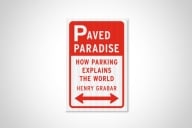You have /5 articles left.
Sign up for a free account or log in.
This report, by the American Academy of Arts and Sciences, will probably vanish down the collective memory hole within days. And that’s a shame, because it puts the lie to several pervasive myths.
The report shows that humanities degrees have been growing as a share of community college degrees for several decades now.
Which myths does this puncture?
Community Colleges as Nothing More Than Job Training Centers
Community colleges are important elements in workforce development, and are rightly known for helping people find middle-skill jobs. But they also -- and increasingly -- provide the first two years of a higher degree for students who want to go on to jobs that require bachelor’s degrees or more.
In the context of the crisis in student loan debt, this should not be dismissed lightly.
Community College Students as Academically Indifferent
Um, no. Last year my campus alone sent transfer students to Amherst, Hampshire, Mount Holyoke, Smith, UMass-Amherst, and Cornell, among others. We have full-time faculty in philosophy, art history, music, and theater.
Community colleges are easy to get into, by design. But to infer from that that the students and/or faculty are academically indifferent is both false and insulting. Students at community colleges run the gamut from the weakest to pretty damn strong, and we have the transfer GPA’s to prove it.
The Humanities as Declining Since the 1970s
This one’s a favorite on Twitter. Every few weeks, someone posts a smug, hand-wringing piece claiming that the humanities have been in decline, as a percentage of undergraduate degrees, since around 1970. It’s usually accompanied by some variation on “kids today…,” or “administrators today…,” or references to Wal-Mart.
It’s a masterpiece of bad math. It lives on because it sounds right to some people. But it has several major flaws.
First, it looks only at four-year degrees.
Second, 1970 was an outlier. If you extend the graph back fifty years prior, you notice quickly that the late 1960’s to early 1970’s are the spike; the level reached by the early 1980’s has held pretty steady since then, and is consistent with the earlier long-term average. Extrapolating from 1970 is like basing stock prices on the NASDAQ of 1999. It’s not technically lying, but it’s catastrophically misleading.
Third, it completely ignores the growth -- yes, growth -- in humanities at community colleges.
--
Community college humanities are so far below the national radar that many people assume they don’t even exist. But they do, they’re growing, and in many cases, they’re really good. Maybe after the shock of the Great Recession starts to fade, we can start to have that conversation in public. Until then, consider yourself one of the few in the know.



